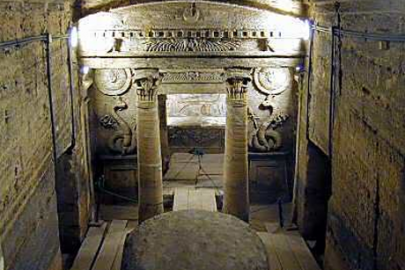The mausoleum made of marble and gold – bearing the inscription “King of Kings, and Conqueror of the world, Alexander III” – held a broken crystal glass sarcophagus and 37 bones of an adult man, which will be examined in order to determine their age.
A team of archaeologists and historians from the Polish Centre for Archaeology may have struck upon one of the greatest archaeological discoveries in the history of mankind, when they unearthed a mausoleum made of marble and gold while conducting an excavation in Alexandria. “We may have discovered the tomb of Alexander the Great”, the members of the team say, filled with joy. The mausoleum was discovered in the “heart” of Alexandria, in an area known as Kom El Dikka, only 60 meters away from the Mosque of Nebi Daniel, Arabic tradition maintained the tomb of the Greek commander was to be found. The tomb held a broken sarcophagus made of crystal glass and 37 bones of an adult man. A carbon-dating analysis is already under way to determine the age of the bones.
The mausoleum is dedicated to the “King of Kings and Conqueror of the world, Alexander III” and the inscriptions it bears are mostly in Greek with a few Egyptian hieroglyphs.
According to preliminary estimates from experts, the mausoleum has a multicultural character, combining artistic and architectural influences from the Greek, Egyptian and Persian culture. The monument was apparently sealed of in the 3rd or the 4th century AD, to protect it from the destruction of pagan sites after the change of official religion within the Roman Empire.
Ask me anything
Explore related questions





